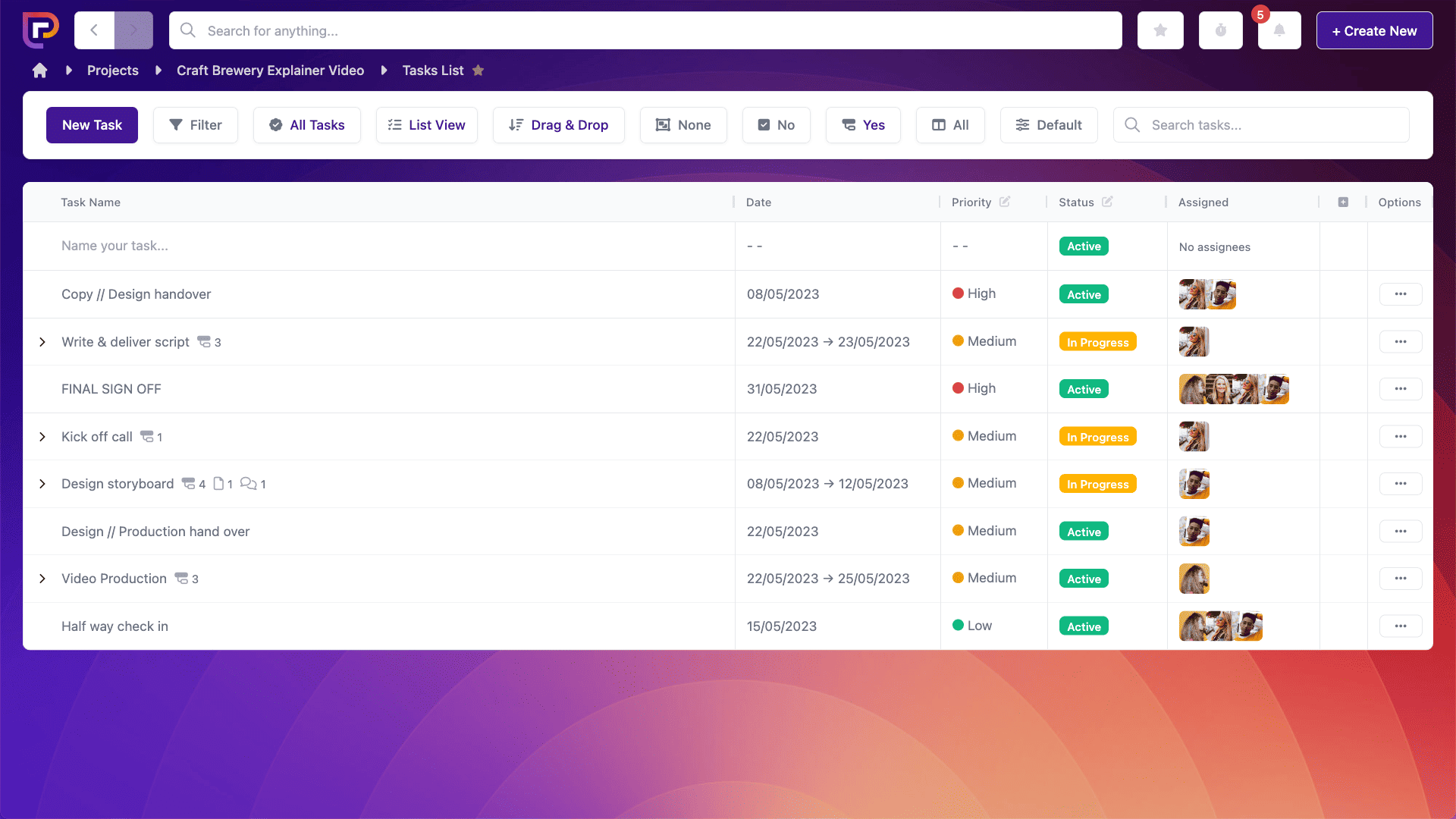
 Project management for events" width="740" height="370" />
Project management for events" width="740" height="370" />
Event project management is crucial for ensuring every detail of your event runs smoothly. In this comprehensive guide, we’ll cover everything from setting objectives and budgeting to booking venues and promoting your event. With practical tips and even a free template, you’ll be well-prepared to manage any event successfully.
Project management could not be more important when it comes to organising events. Without a structured plan in place you could easily forget about important tasks that are crucial to the success of your event. This could cause you to fall behind schedule or, even worse, mean you have to cancel your event all together.
Organising a successful event requires a lot of planning and coordination. Project management can help with this by providing you with a structured approach to check off every important milestone along the way to executing your event.
Our InsightThink of your event as your dream destination. Your tasks are a roadmap that will help you and your team get there on time and on budget!
The first step towards planning an event is figuring out why you want to have the event in the first place. Ask yourself: What do I want to achieve?
A couple of example goals could be:
– To generate X revenue from event tickets
– To increase brand awareness by X%
– To increase sales by X%
– To raise X amount in donations for our cause
Basically, it’s a quantifiable goal that can be used after the event to help you determine whether it was a success or not.
At this early stage, while defining your objectives, you should also consider the finer details. Such as how many attendees you want, when the event will take place, and where.
The best way to keep track of all of this information, and make sure you get everything done ahead of time is to create a timeline.
Let’s say your event is taking place in 9 months time. You can start with that end date and work backwards from it to outline what you need to do between now and then.
When plotting out your timeline, it helps if you can see your tasks visually.
Human brains are hardwired for visual information and can process visuals 60,000x faster than text! Source: WyzowlThe Project.co tasks feature is a great tool for this, and our free events planning template actually comes pre-populated with customisable tasks – such as “Book Venue” and “Arrange Volunteers” – making it even easier to get started!
You can view your tasks in a couple of different ways, for example, as a list:

Or on a calendar:
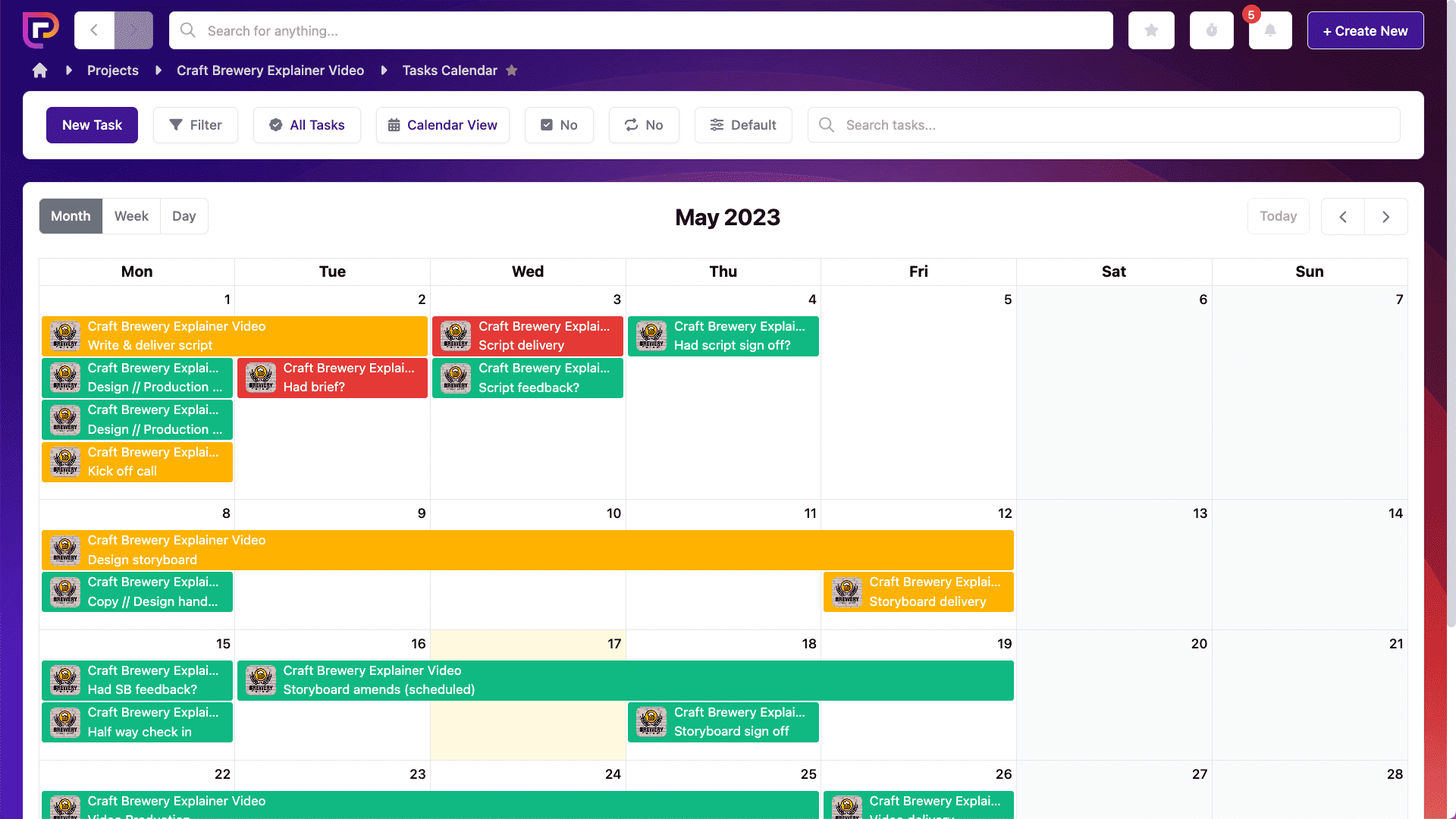
It’s easy to update your timeline. Simply drag your tasks from one date to the next.
You can also split your tasks using our kanban view:
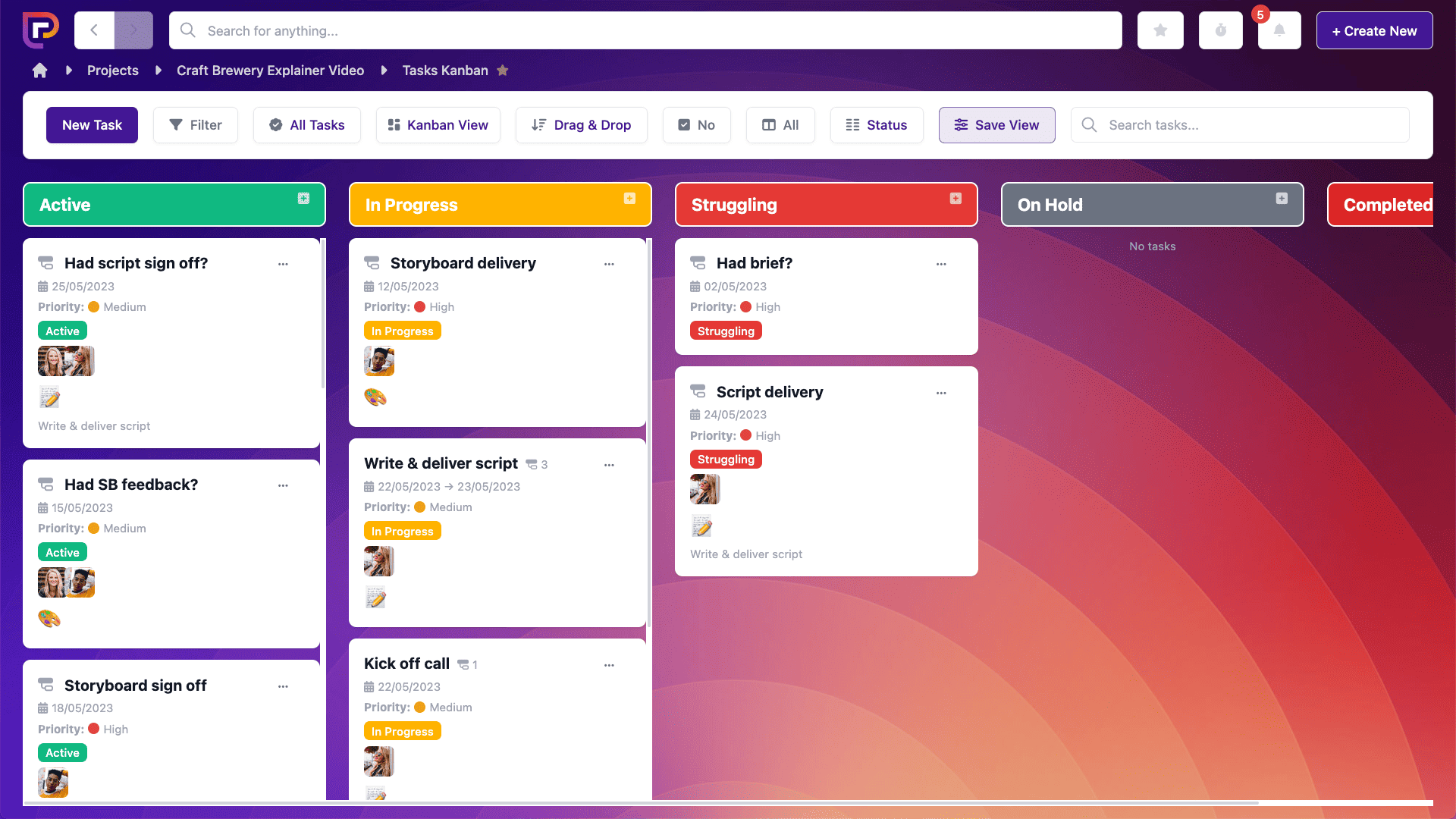
This way, you can easily see what needs to be done, what you’re currently working on, and what has been completed.
You can also create new tasks in a couple of clicks and assign them to different members of your team:
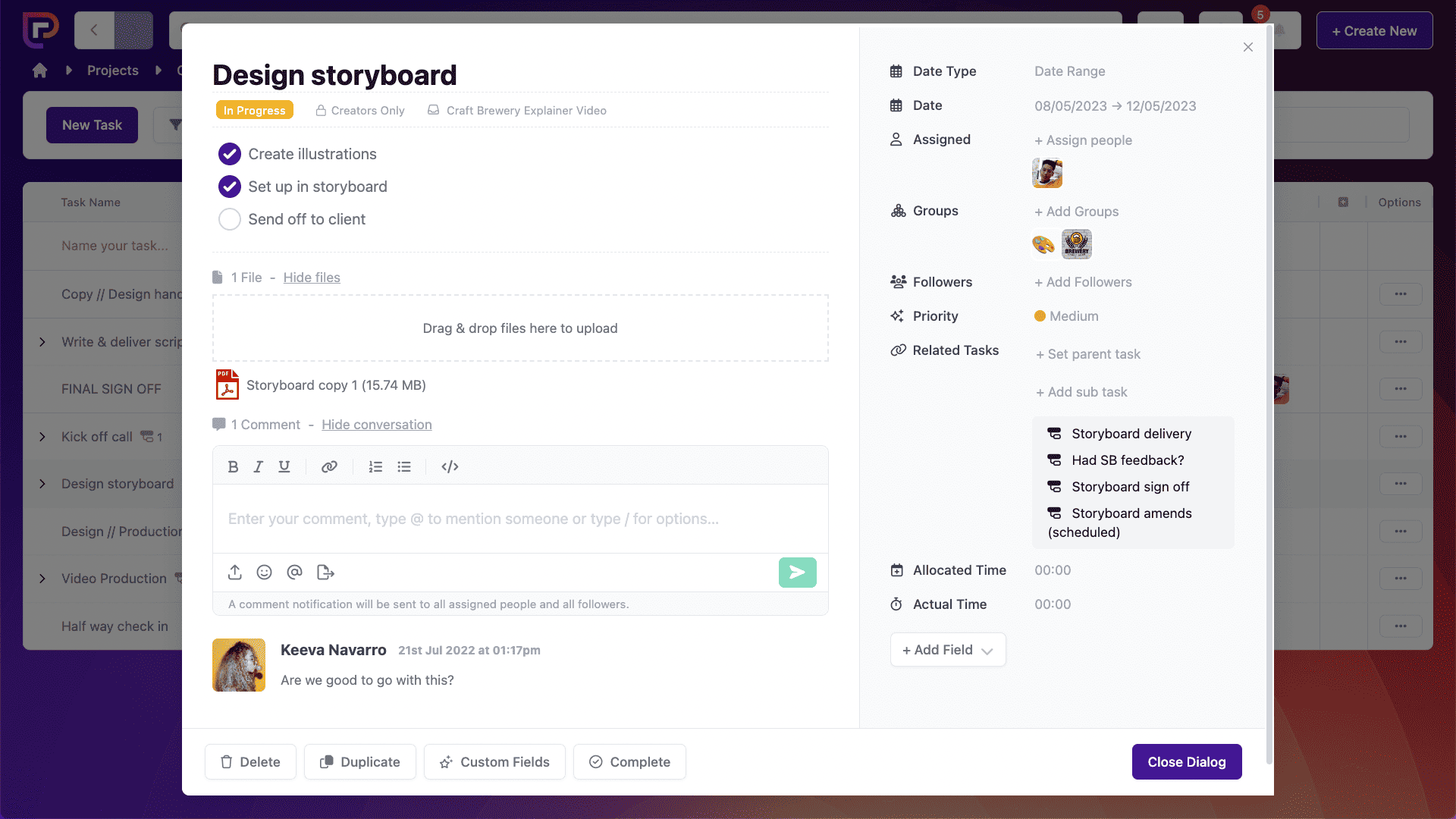
Okay, so it’s not the most exciting part of event planning, but a key component of successful project management is determining your budget.
It can help to map out your budget in advance. This way you’ll be able to make a list of what you need and determine what you can afford.
Event budgets are typically broken down by marketing and promotion (43%), speakers and talent (32%), printed materials (29%) and venues (18%).
Source: EventbriteSome of the key things to consider include:
Set aside some of your budget for items marked “miscellaneous” – added costs are bound to pop up somewhere down the line so it helps to be prepared.
Using spreadsheet software, like Google Sheets can be a great way to keep track of your budget. The benefit with Google Sheets is that your team can collaborate on it together in real-time.
With the Project.co embeds tool, you can embed your Google Sheets to your project – meaning that everyone involved in the planning of the event can work on the document at the same time, without ever leaving the project:
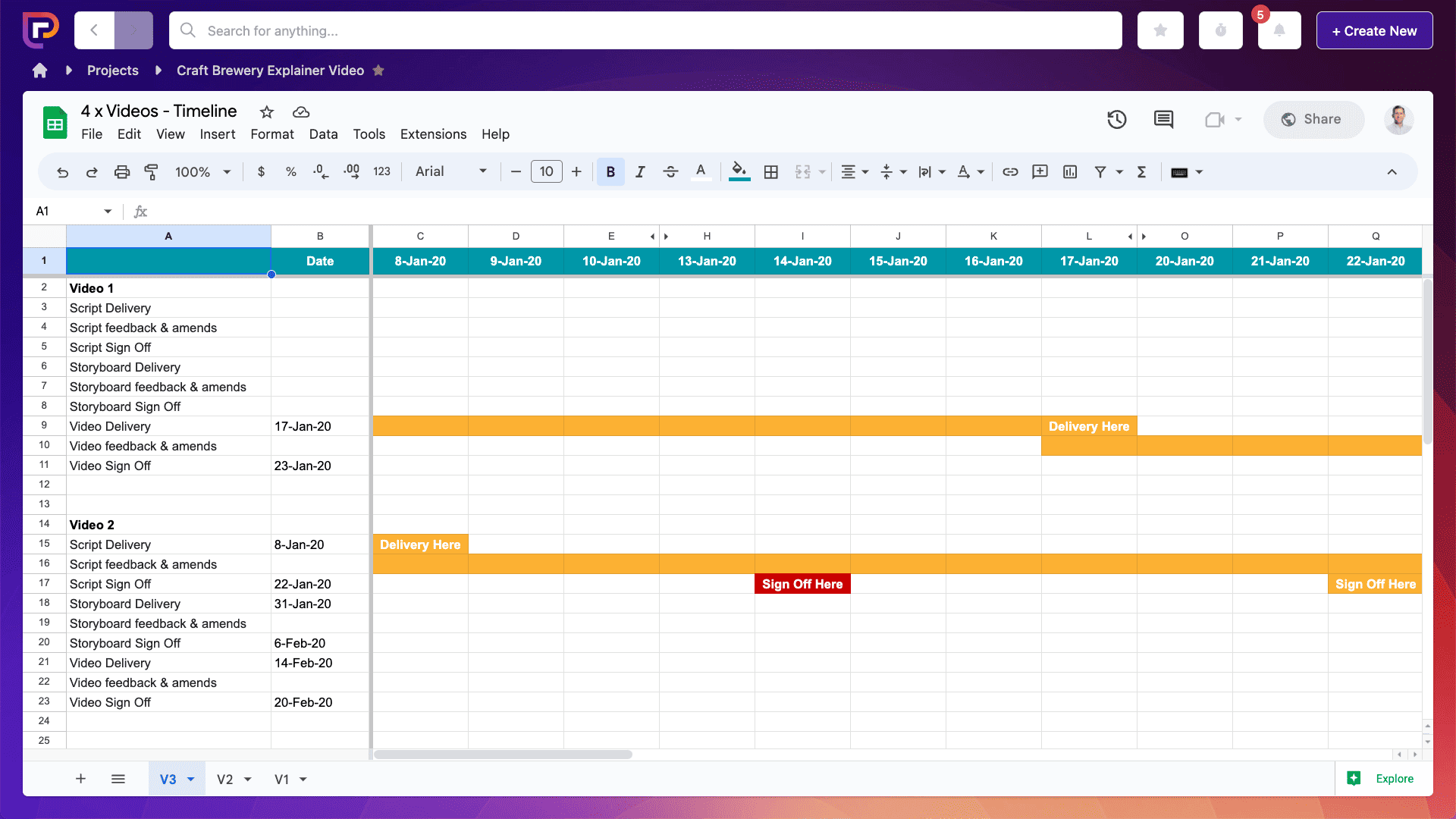
This is a biggie!
A large part of your event experience is down to the venue, so it’s important to take your time, do your research, and ensure you find the perfect one.
When searching for your perfect venue, be sure to consider everything:
– Floor spaceIt’s important to keep all of your venue information in one place, and can be helpful to “score” venues against one another for different features.
By creating a project especially for venues within Project.co, you can add tasks reminding you to call each venue, and also keep track of your conversations. The notes tool is the perfect place to jot down important information.
Our InsightEven if your event is online, finding the perfect venue is still important! Be sure to try out different softwares and make note of any features and restrictions. For example, how many people can join the meeting and how many minutes it can run for.
Once you’ve booked your venue and you’ve set your date it’s time to create an itinerary for your event.
An itinerary is important for ensuring your event runs smoothly and is well scheduled. It can also help you to book speakers and exhibitors.
In addition, having an itinerary can help you to promote your event because you can share it with attendants to get them excited about what’s coming up!
Don’t panic if you struggle to pull your itinerary together. It’s probably going to be fluid right up until the event. This is because things change – speakers may become unavailable and then available, the weather could throw a spanner in the works when it comes to transport.
But, as long as you have an idea of what your plans are for the day, weekend, or week – you will be better prepared to deal with any issues when the actual event is happening.
Within Project.co, you can attach files directly into the discussions tab so that everyone can download and view important documents, like your itinerary.

The discussions tab is the perfect way to keep all of your communication centralised.
Booking speakers, exhibitors (and possibly sponsors) is crucial to the success of your event. By linking with related figures in your field you’ll be able to draw in a wider audience. And by partnering with sponsors – if applicable – you’ll be able to reduce some of the costs.
When booking speakers and exhibitors, it’s important to think about what your attendees will want to see. What – or who – would excite them?
You could send out an open call for people to pitch themselves to you – and explain how they could bring value to your event. And you could also consider contacting influencers in your industry directly.
The kanban tool within Project.co is a great way to keep track of these communications. You can move speakers down the funnel as your conversation progresses.
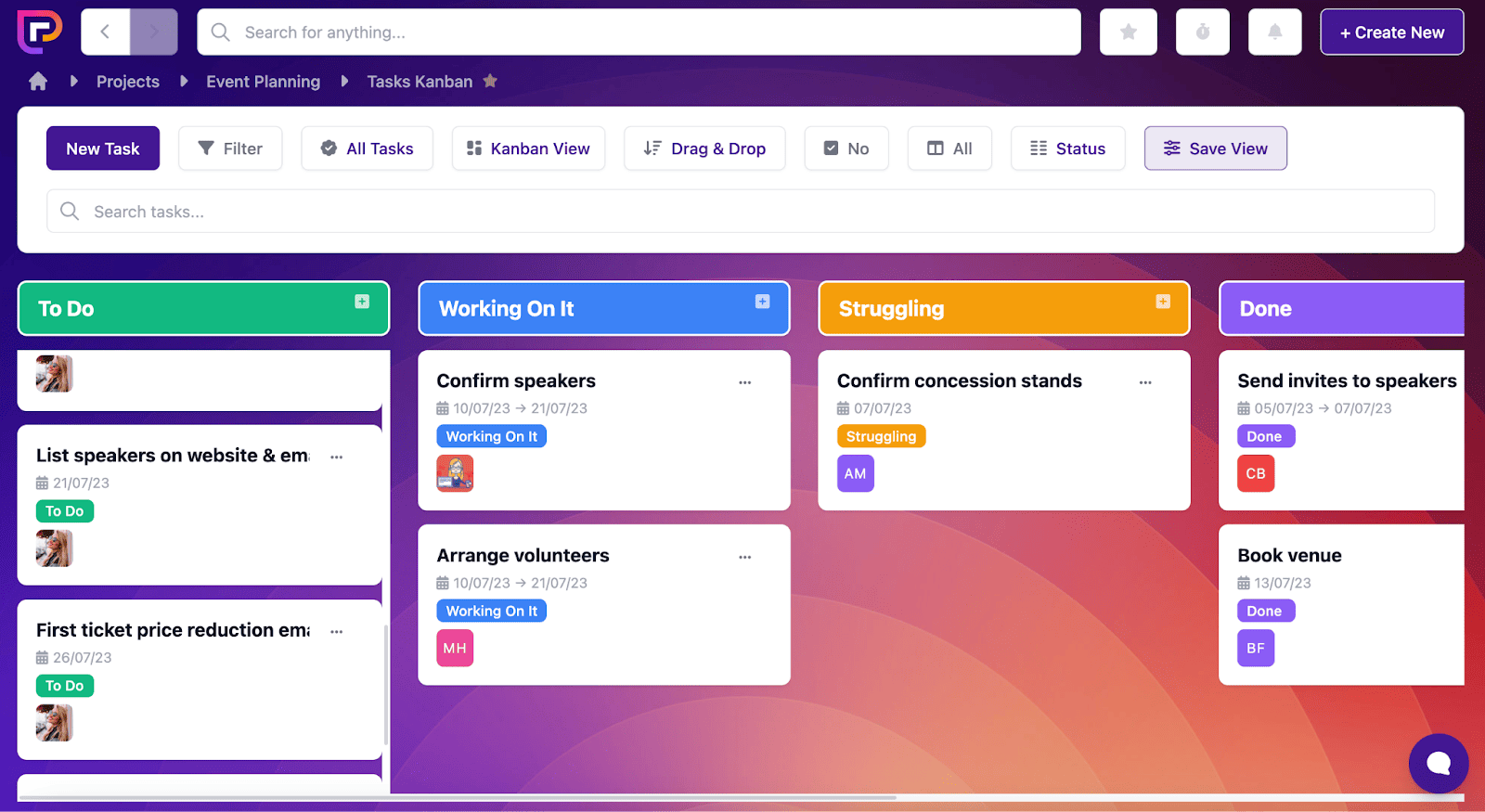
It’s easy to personalise your kanban columns to fit whatever need you have.
If your event is in-person it’s also important to contact vendors, such as security teams and caterers. After all, keeping your attendees fed and safe is just as crucial as entertaining them!
Expert TipIf the event is over a couple of nights, you could also contact local hotels and transportation services to see if you can strike a deal for your attendees – adding more value to your event.
Branding gives your event an identity. It helps you to create powerful and recognisable marketing materials – which will be especially important in those early days of promotion.
A great example of event branding comes from Crufts 2023. Crufts hired the creative agency Dare Creative to come up with something unique for their 2023 show. Here’s the result:
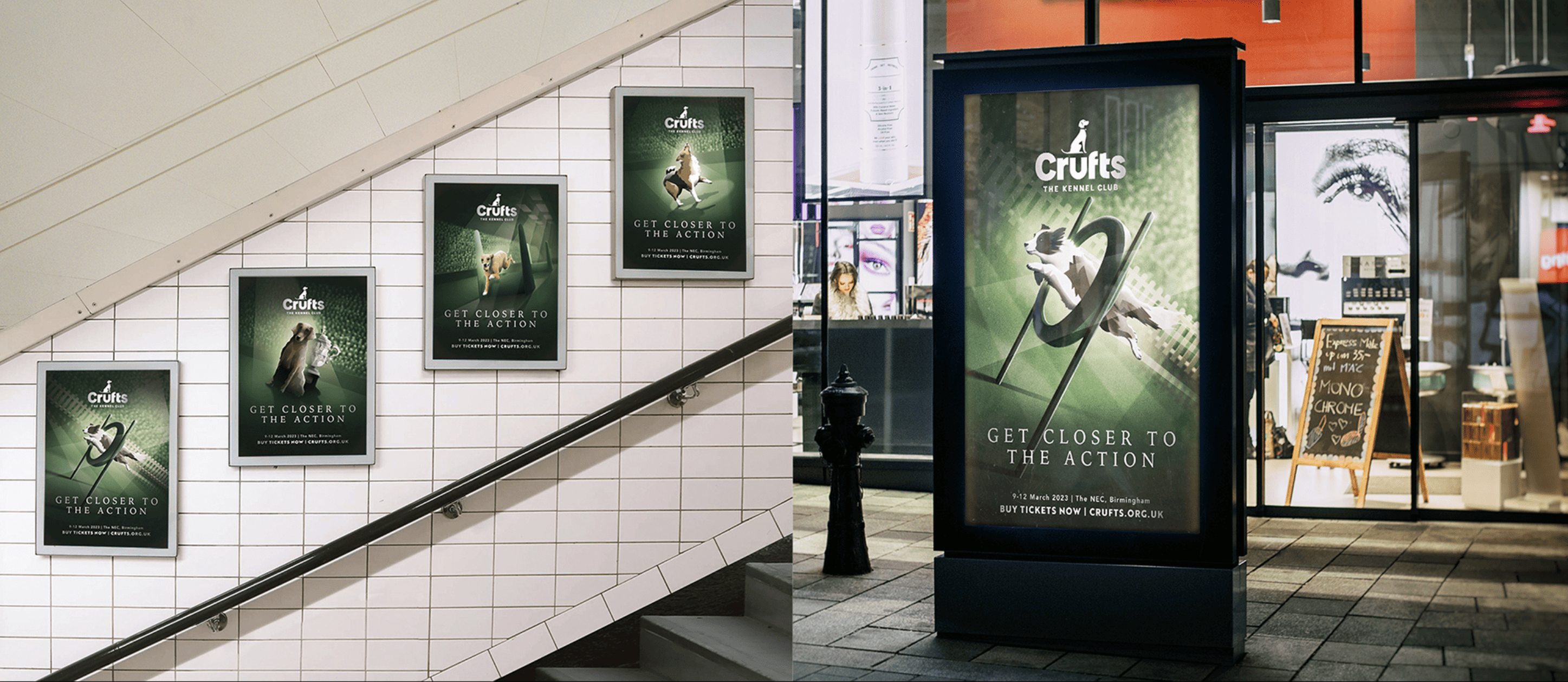
This branding – very different to anything Crufts has done in the past – is eye-catching and memorable.
Discussing the branding for the show, Dare Creative states on their website:
“We needed to vividly convey the sheer drama and exhilaration of sitting ringside at Crufts, witnessing the world’s finest dogs competing at the highest level…We wanted viewers to feel like they were right there, immersed in the action.”
This branding was used across multiple platforms, from buses:

To social media:
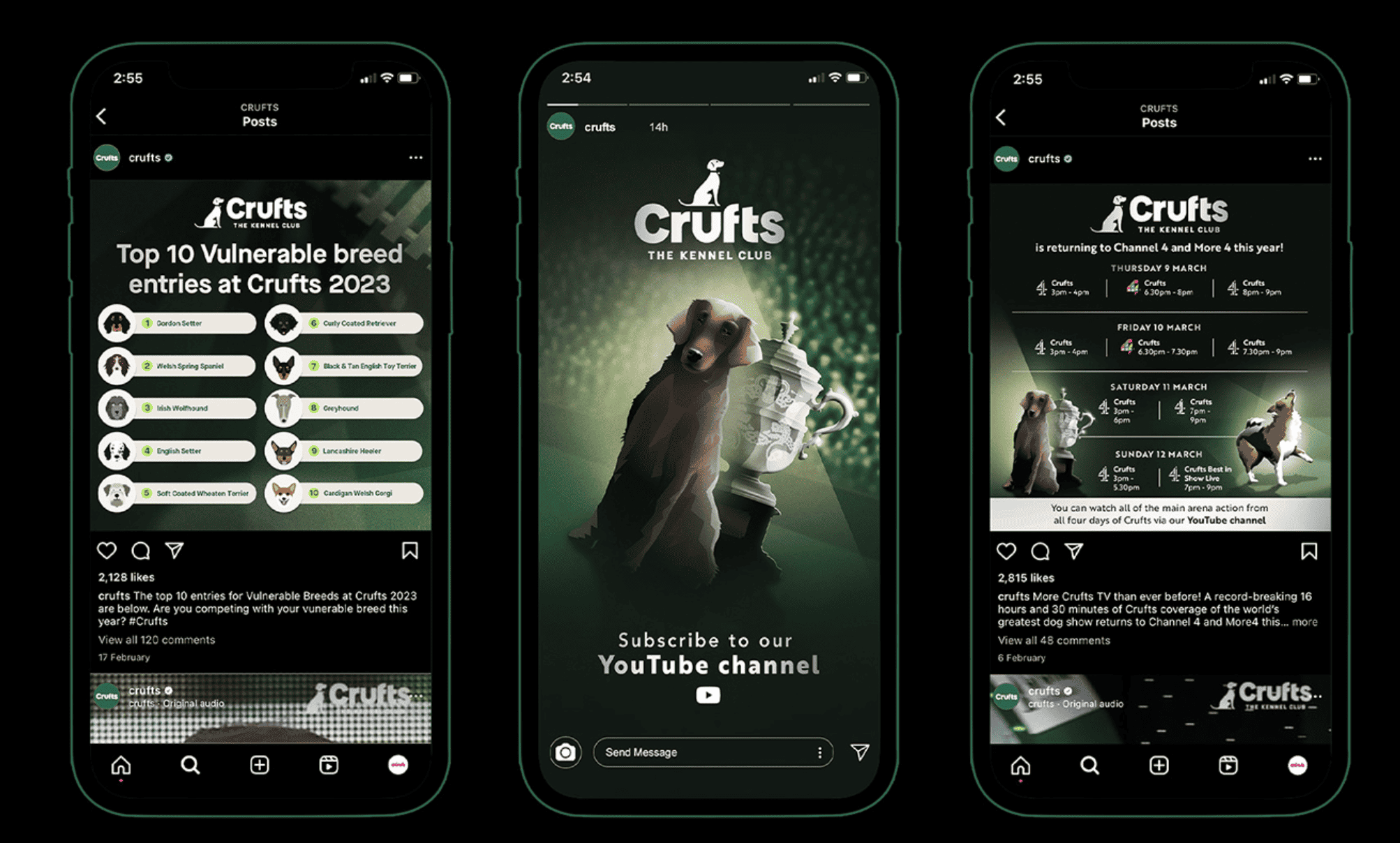
This helped to generate a buzz around the event and ticket sales for Crufts increased 15% compared to 2022.
To do this for your event you could search for branding agencies online, like Crufts did. However, not everyone has the budget to hire a professional branding agency.
If you’re on a tight budget, you could search for a freelancer on a site like Fiverr or Upwork. Freelancing platforms like these have lots of professional designers listed that could create some initial concepts for you at a competitive rate.
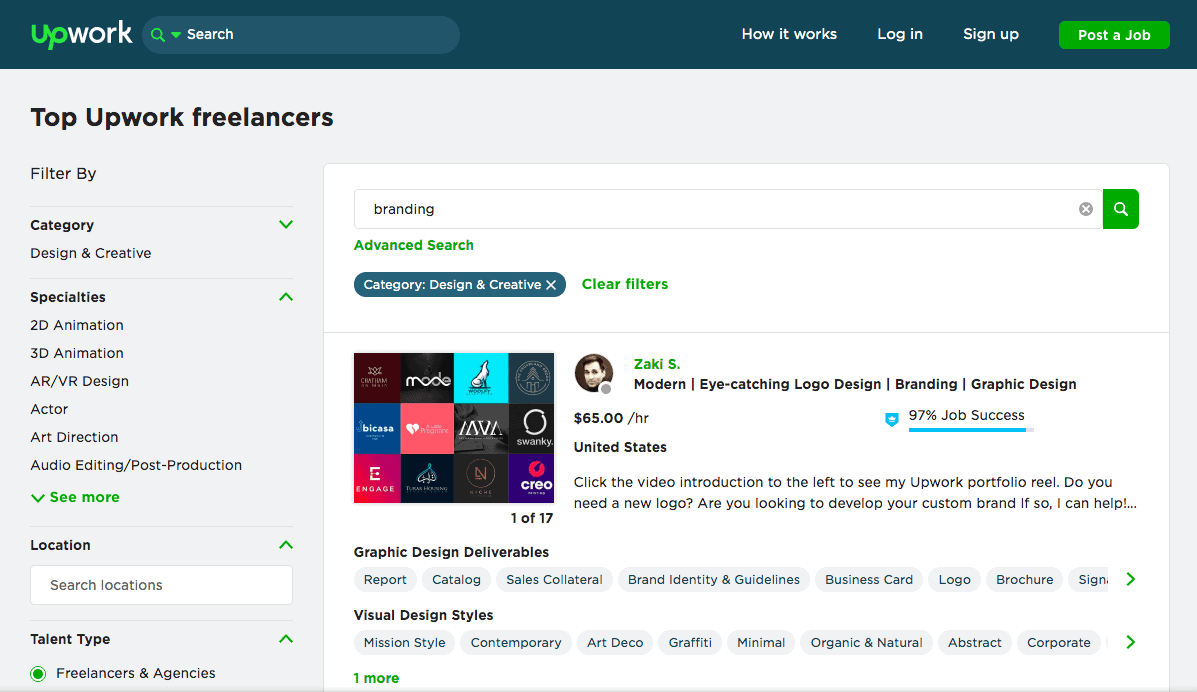
Speaking of generating buzz, once you have everything in place for your event it’s time to promote – promote – promote.
In order to sell tickets for your event and get people excited about attending, you need to work hard to generate hype.
Like Crufts 2023, it’s important to generate hype everywhere and anywhere you can.
96% of marketers use social media to increase awareness about their events. Source: StovaHere’s an example from the Blue Pencil Agency:
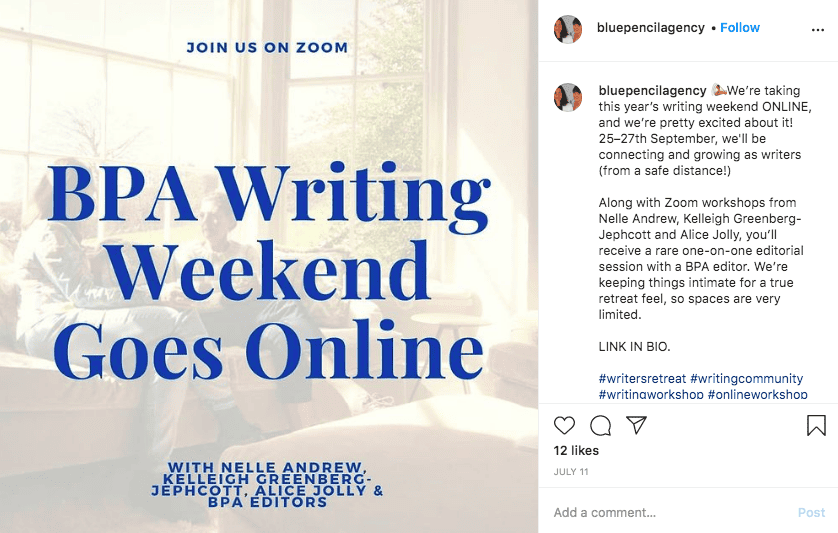
You should also send out emails about your event to encourage the people who are already signed up to your list (and so, aware of your brand) to attend.
40% of event marketers believe email marketing is the most effective channel for promoting an event. Source: Endless EventsTo give your event the best chance of succeeding, you should try to hit all platforms. Of course, this can be a little tricky to keep track of.
Creating a promotions calendar is a great way to remain organised and ensure you don’t miss anything.
You could create a new project within Project.co to help you manage this – separately from your events project.
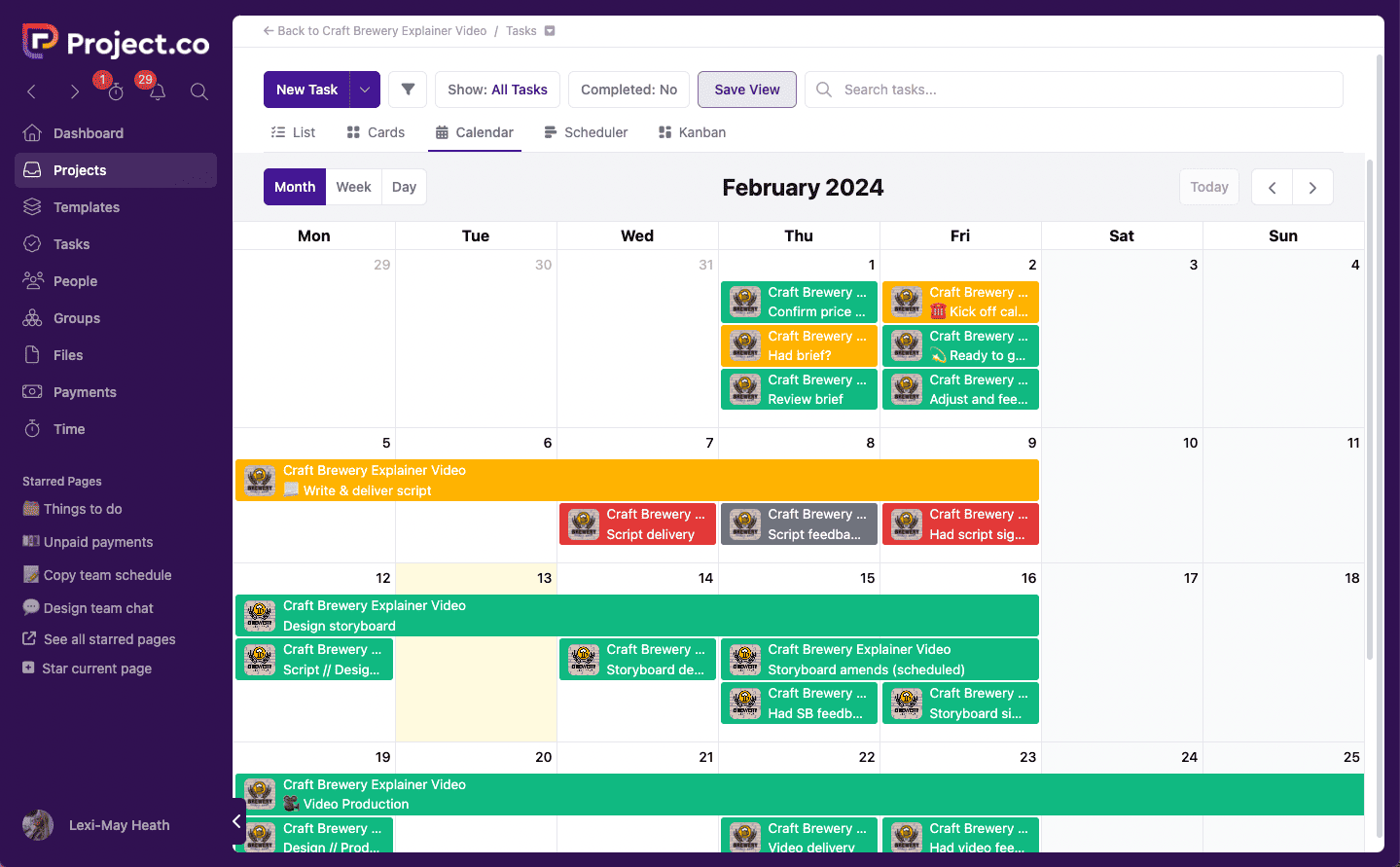
Here, you can keep track of all of your marketing efforts so that you know which promotional material is going out, and when!
After your event is over and done with, you should sit back and give yourself a pat on the back for a job well done. But you should also keep working!
The follow up after the event could be classed as the most crucial part of the whole operation! It all loops back to our first point – what are you hoping to achieve with your event?
After building such great connections, it’s vital that you don’t waste them. Be sure to follow up with the people that you met.
Our InsightYou could turn prospects into customers and also make strong connections with other brands that could be beneficial for your business in the future.
Planning an event is a huge undertaking. There is so much to think about and if you let yourself become overwhelmed then small mistakes can snowball into huge mistakes.
But when you pull off an amazing event it feels so rewarding! And hopefully your business will reap the benefits, too.
With our events template by your side you’ll be equipped to create an amazing event – without the stress!
Samantha Ferguson" width="96" height="96" />
Samantha is Head of Content at Project.co. She has 5+ years' experience in the project management industry and in that time she's written over 100 articles on the subject and conducted studies on employee engagement and how AI is impacting the industry. She also has a lifetime's experience of being obsessed with organisation and productivity - Samantha is that person who plans travel itineraries down to the hour! Her favourite Project.co feature is the AI assistant.
Try the #1 easiest to use project management tool⭐️ All your work in one place
🗓 Never miss a deadline
🗂 Never lose a file
🏅 Simple for your clients
⚡️ Powerful for your team